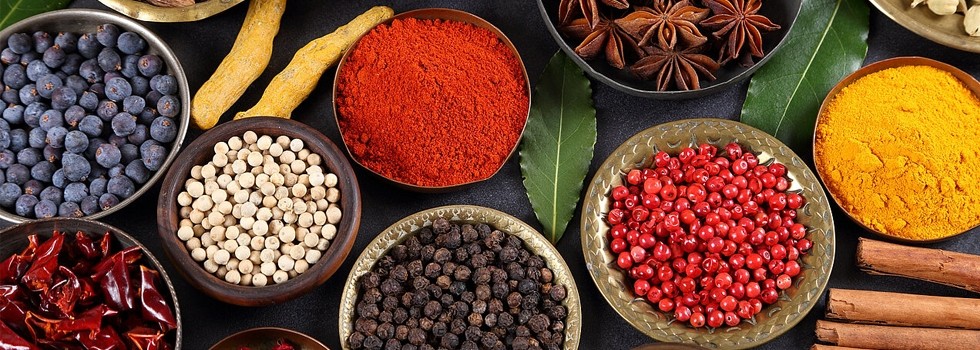Promotional Features
2023 Top Global Flavors – Multilayered and Complex
We're almost through the second quarter of the new year and global food trends for the year have become defined. We talked to leading food journalists and gathered data from chefs, pastry chefs, and mixologists about what patterns they have seen develop. We also gathered data from a commissioned study with Technomic and through secondary research suppliers.
There are a few overarching food trends that we have noticed. All in all, there has been a shift towards healthier eating and the utilization of multicultural ingredients. Top sweet and savory flavors have moved towards the more umami and vegetal with vegan cuisine no longer hiding behind meat alternatives and flavor profiles that seek to emulate a meat focused diet. Vegan junk food has seen an increase in demand as a result. Alcohol consumption is down, and beverages are now designed to taste great with little to no ABV.
The shift towards multicultural foods and flavors can been seen in a few different ways. Diaspora cuisine, which showcases chefs' heritage and immigration stories, has entered the mainstream. Last year we saw American comfort food fuse with more global food flavors.
This year, foreign comfort foods have become the base with which to showcase other new regional global flavors. This pattern has also seen playful interpretations of vegan junk food and luxury fast food. Hyper-regionality has entered the mainstream and the understanding of regional cooking goes well beyond broader, continental categories, and into more specific regional cuisines.
Latin
Latin food trends include a focus on more regional and traditional cooking techniques and ingredients. Top food and beverage flavors include many ingredients that have recently been imported from Latin cuisine. One of the most in demand food items is tinga, a sauce made with tomatoes, onions, garlic, and chiles. A popular Latin dessert called oblea, made by sandwiching dulce de leche and other fillings between two wafers has been the most in demand dessert item so far.
The fermented pineapple beverage hailing from Mexico called Tepache has also served as a popular inspiration in many bar programs. It can be both served as it is traditionally prepared or used as a cocktail base.
Raw ingredients such as herba luisa, mamey, hoja santa and other fruits, herbs, and vegetables are very much in demand. These ingredients are reflective of the increased focus on regional cuisines in top global food trends. They show a movement towards more herbaceous and savory tastes. These ingredients are utilized throughout both savory and sweet foods as well as mixed within beverages.
Asian
Asian food trends have also moved to include more specific regional cooking. Condiments such as the Korean soy sauce, Ganjang, and Shacha — a Chinese recipe of garlic, shallots, chiles and dried shrimp — are some of the most in demand items so far. Popular spicy Filipino sauces like the sweet Palapa and vinegar-based Sawsawan have also seen a rise in demand.
Asian beverage trends have followed suit with food trends. Ganjang is also in popular use among adult beverage professionals. Other popular ingredients include the sweet, rich Shinko Pear and extra spicy Indian Byadgi chile. The popularity of these ingredients follows the global food trend toward hyper-regional cuisine.
Middle Eastern and Mediterranean
The trend towards hyper-regionality continues in the Middle East and Mediterranean. Some of the recipes making a splash include the Middle Eastern spice blend Baharat, and Agliata — an Italian garlic sauce and condiment. The global food trend towards fermented and multilayered flavors can be seen in the rising popularity of Muhammara, a dip made from fermented red bell peppers and walnuts.
Lokum is a popular Turkish confection made from starchy sugar gel. This dessert is popular among food and beverage professionals. Hawajj is a Yemeni spice mixture that is proving popular in the beverage world.
Baharat and Hawajj translate to "spices" and "mixture" respectively. They are spice blends that utilize different ingredients across regions and even across families and households. The popularity of these blends is indicative of the shift towards the multicultural flavors and diaspora cooking.
African and Caribbean
Caribbean and African food trends continue in line with the trends mentioned so far. Kan kan kan and Kyinkyinga Spice are West African spice blends and are among the most popular global flavors in the culinary world right now. Mitmita, another trending blend, is an Ethiopian seasoning mix of African bird's eye chiles, Ethiopian cardamom, cloves, and salt. Kuchela, a Trinidadian hot relish, is yet another hyper-regional flavor making waves in the culinary world.
Orgeat — a sweet almond-based syrup — is very popular among food and beverage professionals and is seeing use primarily in cocktails as a sugar alternative. Moroccan Mint is another much sought after ingredient for beverages. Its intense flavor serves to amp up beverages without the use of alcohol.
Crimson tea, named after its blend of crimson cranberries, elderberries, grapes, currants, rooibos, and hibiscus has also been a popular nonalcoholic beverage this year. Nonalcoholic beverages, in general, are experiencing a major renaissance as alcohol consumption is down across the board and diners still crave rich, exciting drinks with complex flavor profiles.
In Conclusion
There are a lot of exciting developments in the trends of 2023 top global flavors. Across different regional cuisines we are seeing a specialization of regions and a rising complexity in the ingredients used. The global food trend towards more multilayered and complex flavors can explain the rise in popularity of fermented items such as muhammara or tepache.
The push towards diasporic chefs telling their stories through cooking can be exemplified by the rising popularity of the Latin American oblea. Of course, every chef has their own twist on integrating each of these trends into their unique style, yielding a vibrant and flavorful culinary scene that's sure to continue deepening throughout 2023.
To learn more about our trends research and insights, contact the team at Symrise today.



